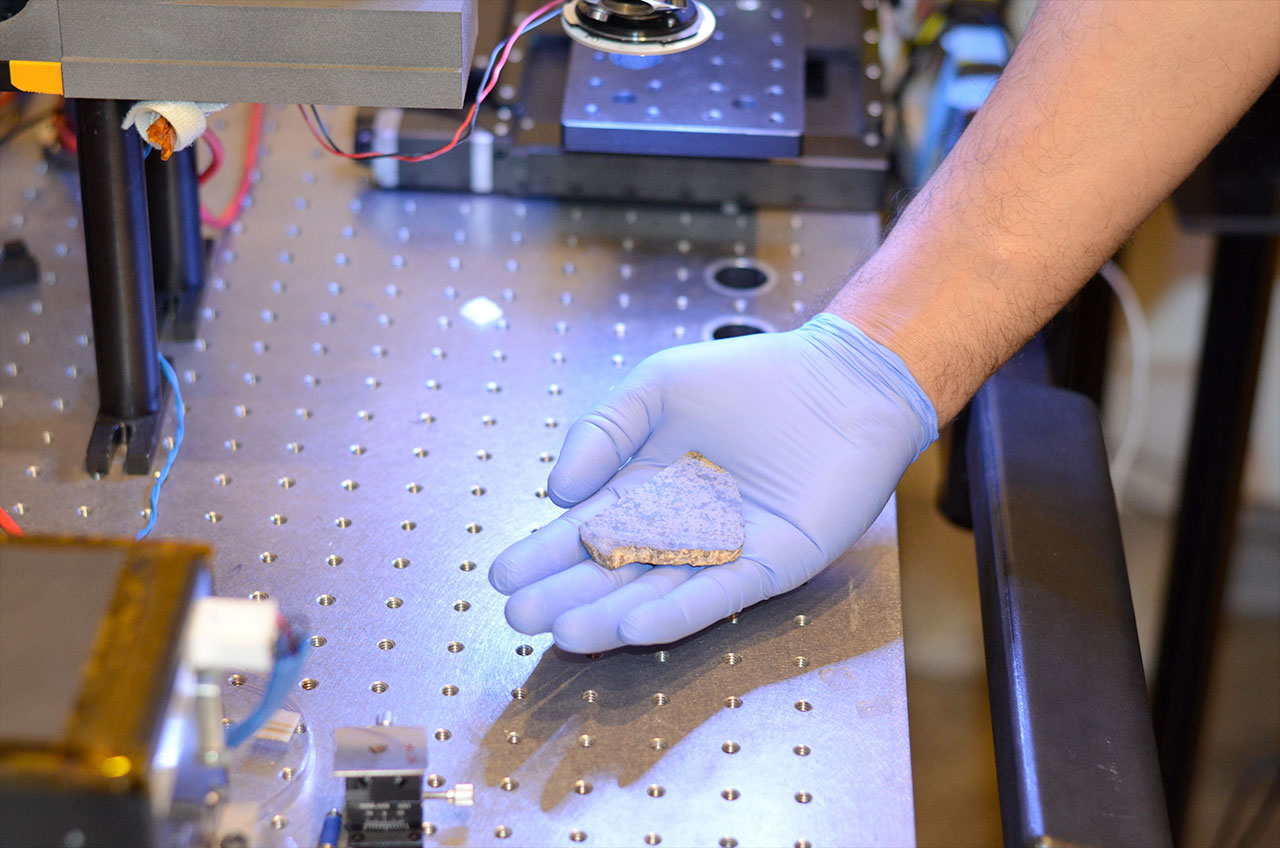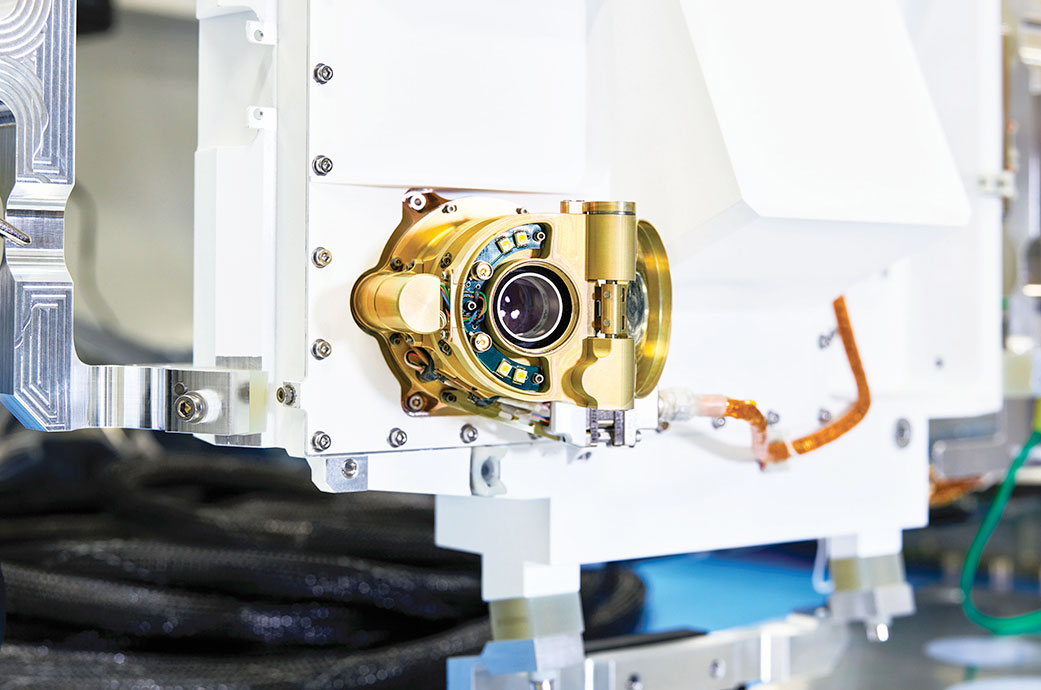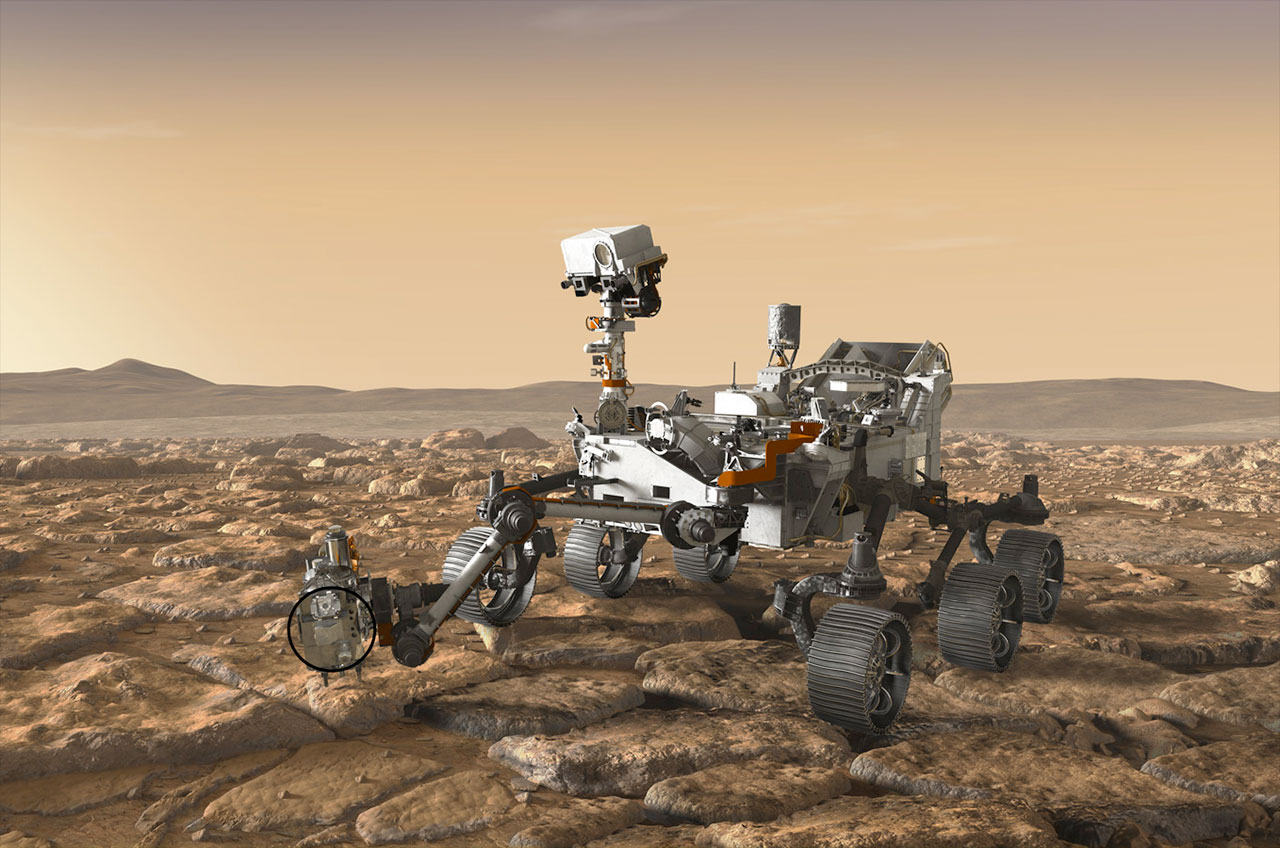Mars sample return: NASA's Perseverance rover to return Martian meteorites to Mars

NASA is poised to launch its first Mars sample return mission, though not in the traditional sense of the term.
The U.S. space agency is preparing to send its next rover to the Red Planet with the tools needed to collect and cache samples for their later return to Earth by a future spacecraft. The samples may help answer if ancient life existed on Mars.
NASA describes the Perseverance rover as "the first leg of a round trip to Mars," but the six-wheeled vehicle is already equipped with everything it needs to carry out the first "Mars sample return," even before reaching Mars.
In photos: NASA's Mars Perseverance rover mission to the Red Planet
Perseverance is carrying pieces of Mars that were delivered naturally to Earth. Two small slices of Martian meteorites are on board.
"We figured this was a nice way of doing the sample return," said Luther Beegle, the principal investigator for the SHERLOC (Scanning Habitable Environments with Raman & Luminescence for Organics & Chemicals) science instrument on the rover.
Perseverance is scheduled to launch from Cape Canaveral, Florida, on July 30, and land in Jezero Crater on Mars on Feb. 18, 2021.
Get the Space.com Newsletter
Breaking space news, the latest updates on rocket launches, skywatching events and more!
Self calibrating
Perseverance's Martian meteorites are more than just hitchhikers that have found a ride home. They will play a role in fine tuning the rover's search for life.
Mounted at the end of the rover's robotic arm, SHERLOC uses a combination of a laser, a camera (called WATSON, or Wide Angle Topographic Sensor for Operations and eNgineering) and spectrometers to identify organics and minerals that have been altered by water, pointing to possible evidence for past Martian microbial organisms.
To ensure that the measurements that SHERLOC takes are accurate, its precision instruments need to be periodically calibrated, especially given where the readings are being taken.

"This is a very inhospitable environment. It has temperature swings. It has dust. It has UV [ultraviolet] radiation on the surface," Beegle told collectSPACE.com in an interview. "So what you have to do — and you have to do this in a laboratory [on Earth], too — is you have to calibrate your instrument so that what you determine you're looking at is really what you're looking at."
As such, Perseverance also carries a SHERLOC calibration target, a device about the size of a large smartphone that has 10 different material samples. The team operating SHERLOC will point the instruments at the "cal target" once every three to five months to check that the wavelengths and spatial scales they measure on Mars match the known properties of the Earth-sourced examples.
"We listed the things we had to measure and then we figured out how to measure them. That's where the calibration target came from," said Beegle.
One of the SHERLOC targets is the Martian meteorite slice, which will be used to determine how well the mapping spectrometer's scanning mirror is working.

"We decided to put a natural sample [on the target] and then somebody came up with a great idea, 'Hey, let's make it a Martian meteorite, right?'" Beegle recalled. "We can return a sample back to Mars because Perseverance is the first stage of sample return."
"Perseverance will be collecting samples that are 5 centimeters by 1 centimeter [2 by 0.4 inches], putting them in tubes, sealing them and then a future rover is going to come pick them up and bring them back to Earth," he said.
Another of Perseverance's instruments, its mast-mounted SuperCam, also has a Martian meteorite on its calibration device as a practice target and as an "inverse sample return."
Long-term loan
Technically, Perseverance is the second Mars mission to bring a Martian meteorite back to the planet. NASA's Mars Global Surveyor, which operated from 1997 to 2007, still carries an Earth-sourced piece of Mars — but as an orbiter, circles high above the surface.
Perseverance's meteorites will be the first to complete the full round trip.
"A lot of why we came up with what we did was because one of our co-investigators was a gentleman named Mark Fries. He worked at Johnson Space Center," said Beegle, who works at the Jet Propulsion Laboratory in Pasadena, California.

Fries works in the Astromaterials Research and Exploration Science division at Johnson, the Houston office that is responsible for curating NASA's collection of extraterrestrial materials, including Apollo-recovered moon rocks, interplanetary dust samples and meteorites.
"So we went in to try to find a piece of Mars that we could use and we ended up contacting the Natural History Museum in London, which had an extra sample of material that they loaned us," Beegle told collectSPACE.
The museum provided a sample known as Sayh al Uhamiyr 008 (SaU 008), which was found in Oman in 1999 and has been in its care since 2000.
"The piece that we are sending was specifically chosen because it is the right material in terms of chemistry, but also it is a very tough rock," Caroline Smith, principal curator of meteorites at the Natural History Museum, said in a statement. "Some of the Martian meteorites we have are very fragile. This meteorite is as tough as old boots."
"In addition, studying this sample over the course of the mission will help us to understand the chemical interactions between the Martian surface and its atmosphere," she said.
The sample originally left Mars between 600 and 700 thousand years ago, making its journey aboard Perseverance a very long-awaited homecoming. It will also be a unique occurrence for the museum, said Smith.
"Every year, we provide hundreds of meteorite specimens to scientists all over the world to study," said Smith. "But this is a first for us: sending one of our samples approximately 100 million kilometers [62 million miles] away back home, to further our knowledge of Mars."
And though it is technically a loan, Beegle does not think the museum is expecting to get the meteorite back.
"If they want it back, we'll see what we can do," he said, laughing. "But I would not be holding my breath."
Follow collectSPACE.com on Facebook and on Twitter at @collectSPACE. Copyright 2020 collectSPACE.com. All rights reserved.
Join our Space Forums to keep talking space on the latest missions, night sky and more! And if you have a news tip, correction or comment, let us know at: community@space.com.

Robert Pearlman is a space historian, journalist and the founder and editor of collectSPACE.com, a daily news publication and community devoted to space history with a particular focus on how and where space exploration intersects with pop culture. Pearlman is also a contributing writer for Space.com and co-author of "Space Stations: The Art, Science, and Reality of Working in Space” published by Smithsonian Books in 2018.In 2009, he was inducted into the U.S. Space Camp Hall of Fame in Huntsville, Alabama. In 2021, he was honored by the American Astronautical Society with the Ordway Award for Sustained Excellence in Spaceflight History. In 2023, the National Space Club Florida Committee recognized Pearlman with the Kolcum News and Communications Award for excellence in telling the space story along the Space Coast and throughout the world.










